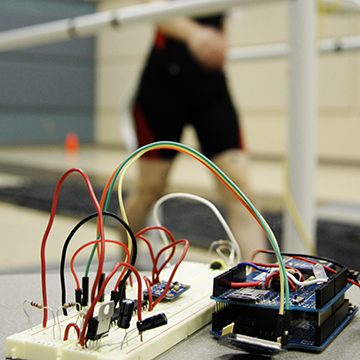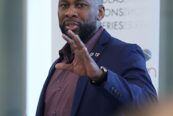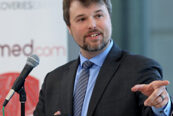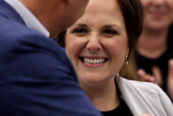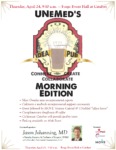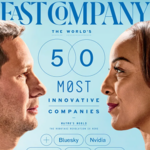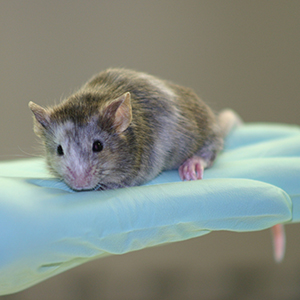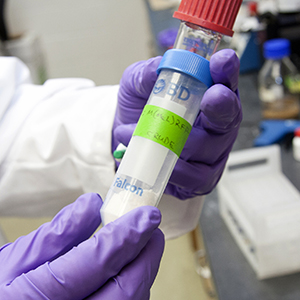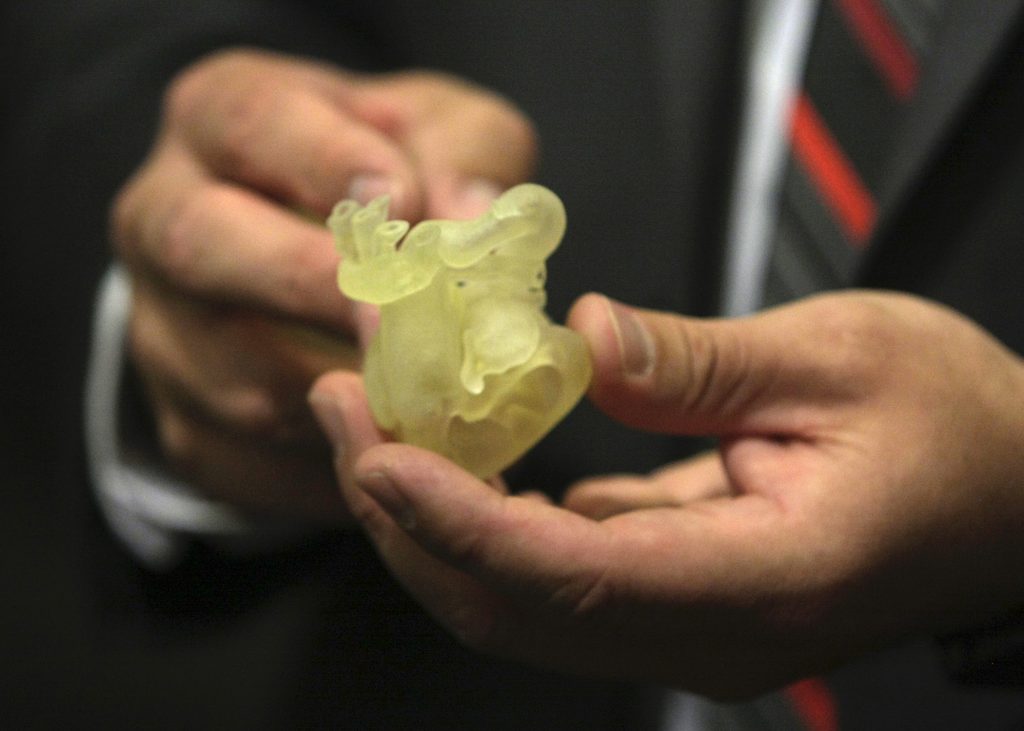
UNeMed’s annual Innovation Week continued Oct. 4 with a panel discussion about the biomedical applications in healthcare. Above, R. Gabe Linke, the 3D printing coordinator at Children’s Hospital and Medical Center in Omaha, shows guests a 3D-printed model of a newborn’s heart. Surgeons used the model to study abnormalities, and planned an eventually successful procedure to correct the problems.
OMAHA, Neb. (Oct. 4, 2016)—A panel of 3D printing experts convened Wednesday afternoon to discuss the potential impact the technology could have on healthcare and biomedical research.
The panel explored biomedical 3D printing applications that are currently possible, and examined some ground-breaking uses to come in the near-future. The panel also discussed the increased use and accessibility of 3D printing, not just for healthcare purposes but for everyone.
The best approach to get started in 3D printing is simply to dive right in. Buy an inexpensive consumer model and start experimenting, panelist Jorge Zuniga, PhD, told an estimated 68 onlookers.
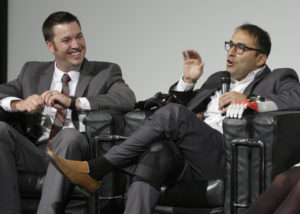
Panelists R. Gabe Linke (left) of Omaha’s Children’s Hospital and Medical Center and Jorge Zuniga (right) of UNO during the 3D-printing discussion Tuesday in the DRC auditorium.
“For the holidays…get one of those cheap ones, and give it to your kid,” said Dr. Zuniga, who specializes in prosthetic research in UNO’s biomechanics department. “Then you’re going to learn how to use it… Download files and just print stuff…By doing this you’re going to understand the applications in your field, and how you can solve a problem. It’s not that complicated. You can learn this.”
Dr. Zuniga took a similar approach when he jumped headlong into 3D printing about five years ago. He had heard about a project in South Africa creating prosthetics for under-privileged children there. He was frustrated in his attempts to learn more about the program, so he created his own prosthetic.
Armed with little more than some borderline obsessive curiosity and open-source files available to anyone with an internet connection, he and his team created the “Cyborg Beast.” It’s an entirely 3D-printed prosthetic hand for children that looks like something out of a science fiction comic book.
Another panelist, Karen Linder, was another late entry into 3D printing, developing an interest in the area when she learned about a new ceramic printing process. She invested in the technology and helped create a new Omaha startup company, Tethon 3D, where she serves as the CEO. Tethon 3D specializes in a proprietary ceramics printing process that can then be fired in a kiln to create true porcelain objects—and with such intricate designs they would be extremely difficult or impossible to create by any other method.
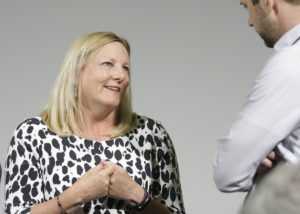
Panelist and Tethon 3D CEO Karen Linder meets with guests immediately after the event.
“The resources are there, and the software is getting easier and easier,” she said, urging audience members to explore 3D printing, regardless of their knowledge-base. She added later: “You can learn at any age.”
But Linder’s key point was the potential 3D printing has for personalized or customized healthcare. She talked about the ability to print pills, which could include several medications. Instead of taking multiple pills, a patient in the future might be able to get the same medications with a single pill.
Although customized medications are still a few years away, Omaha Children’s Hospital and Medical Center is bringing personalized care to patients right now. Led by 3D printing coordinator R. Gabe Linke, Children’s uses MRI and CT scans to model patient hearts for 3D-printed replicas. Surgeons then study abnormalities, develop a plan and practice procedures on the models long before the patient enters the operating room.
Children’s doesn’t charge patients for the service, which they have been offering for less than a year, but the practice is already improving outcomes, Linke said.
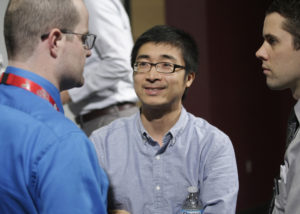
Panelist and UNMC researcher Bin Duan, PhD, meets with guests immediately after the event.
UNMC researcher Bin Duan, PhD, rounded out the panel group. Dr. Duan heads UNMC bioprinting unit in the Regenerative Medicine Program in the Department of Internal Medicine. He’s working on using sophisticated printers that can use several different types of materials to create tissues suitable for human implantation. More specifically, he wants to create the complicated structures necessary for bone and cartilage implants that could be used to correct birth defects in the jaw.
Researchers elsewhere are working on ways to 3D-print other cellular structures such as organs and blood vessels, he said.
Co-sponsored by UNeMed Corporation, the UNMC 3D Makers Club and the McGoogan Library of Medicine, the 3D printing panel discussion was part of Innovation Week. Innovation Week is a series of events meant to highlight and celebrate the discoveries and creations of UNMC’s faculty, students and staff.
Three events remain for Innovation Week 2016.
Later today, UNeMed will host its fourth UNMC Technology Demonstration Day at 4 p.m. in the Michael F. Sorrell Center amphitheater. Dr. Zuniga will be among the featured presentations. All six speakers will explore startups and technologies developed at the university in short presentations intended for a non-expert audience. Presentations will be followed by a short reception.
Innovation Week wraps up Thursday, Oct. 6 with the iEXCEL Expo and the Innovation Awards.
The iEXCEL Expo is a hands-on display of some of the most advanced medical training tools in the world. It will be held in room 1012 at the Sorrell Center from 11:30 a.m. until 4 p.m.
The Innovation Awards begins at 4 p.m. in the Durham Research Center I auditorium. UNeMed will honor all UNMC researchers, students and faculty who disclosed a new invention, secured a U.S. patent or licensed a technology in fiscal year 2016. An Innovator of the Year and the Most Promising New Invention of 2016 will also be named. UNeMed officials will also announce the winner of a free 3D printer.
Learn more about all Innovation Week events at https://www.unemed.com/innovation-week.

